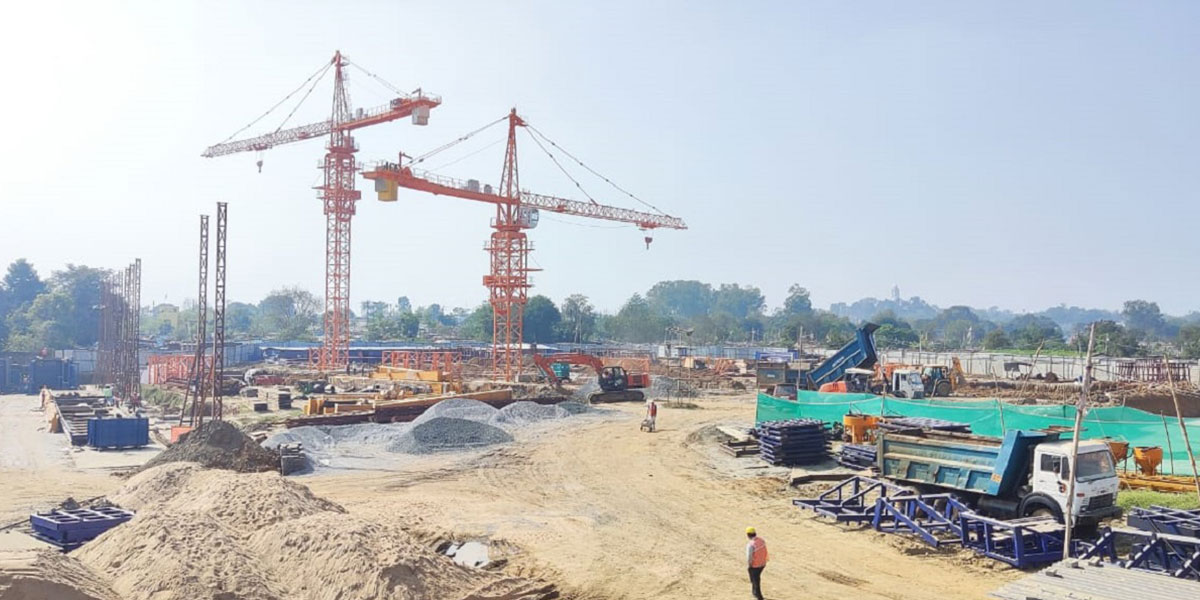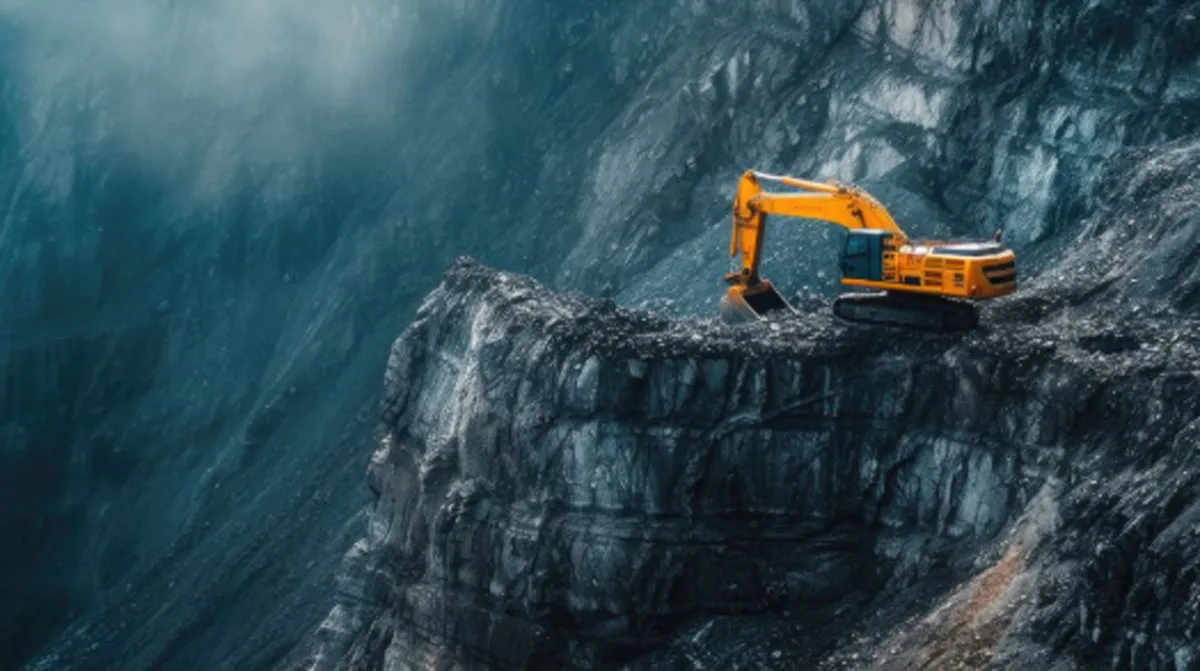Construction startups in India are finding a place in the sun as the sector looks for new-age technologies to improve the delivery of infrastructure and real-estate projects.
The year 2020 was a washout for many businesses – but certainly not for Indian construction tech startups. A record 18 startups in the segment received equity infusions, according to data from Tracxn (see chart), although the $ 0.241 billion (bn) flow of equity into the segment was lower than the all-time high,
$ 1.050 bn in 2018. 2021 promises to outperform last year, with nine startups already receiving $ 0.723 bn in equity funding.
If you look at the global picture, which is important because overseas construction tech startups like Katerra and Briq are operational in India, construction tech is one of the most active sectors for investors, with an overall equity funding of
$16.5 bn in 1K+ companies, according to Tracxn. Over half, this funding was raised in the past three years (2019-2021 to date).
What’s attracting investors to construction tech startups?
Why construction tech
Construction is a key part of India’s economic development and health, contributing about 9 per cent of the country’s GDP. But construction is one of the least digitised industries, not just in India but globally as well, notes Amarjeet Singh, Partner and National Lead, Emerging Giants and Startups, KPMG in India.
That needs to change
“The constant need for improvement in productivity coupled with the growing focus on evolving climate policies and the impact of the COVID-19 pandemic have forced the industry to think of new, innovative, tech-enabled ways of working,” he continues. “In large-scale construction, there is a need for remote monitoring of progress, efficient and transparent material ordering, tech-enabled contracting, etc. In residential construction, the preference has changed to a low-touch and high-digital interaction across the lifecycle, covering the design to handover process. Also, the construction sector in India has been ridden with allegations of being less transparent.”
These ground realities have accelerated digitisation in the industry, says Singh, thereby increasing interest and investment into construction tech. “Another factor increasing demand for construction tech and, hence, startups with innovative ideas,
is the Government’s increasingly higher allocations to capital expenditure,” he adds. “In FY22, the Government has allocated `5.54 lakh crore to capital expenditure, as against
Rs.4.12 lakh crore in FY21, thus marking a 34.5 per cent increase.”
Preferred areas for investors
According to Sandeep Patel, CEO, Nepra Resource Management, there is a significant requirement for new technologies in the civic infra space, but the challenges lie
in creating the right economic model and overcoming resistance to change and innovation within civic bodies.
“Considering the large size of the construction materials market, we see great interest in new-age companies that use technology to drive supply-chain efficiencies and expand the options for B2B and B2C consumers,” says Abhishek Chandra, Managing Director, Evolvence India. “These players typically aggregate demand and supply. Supply-side inefficiencies arise because the supply of most construction material is logistics-driven. High transportation costs restrict most players to serve only a limited area. However, aggregators who optimise logistics can help suppliers get into new geographic areas.”
On the demand side, he points out that smaller buyers can especially benefit from aggregators by getting access to manufacturers who would usually only deal with bulk buyers.
“We expect to see more investment in companies using technology to make processes faster, better and cheaper,” says Rohit Batra, Managing Partner, Evolvence India. “The Evolvence India Fund has recently invested in Infra.Market for those very reasons.”
Tracxn lists project management, design tools, building technology, project management and marketplaces as some of the
top business models attracting major funding.
As startups in this segment turn profitable, Singh observes that investor sentiment is positive but cautious in evaluating startups owing to the regulations and laws that guide the sector.
Investor vision
Every investor (angel/VC/PE/others) operates with a different end goal, explains Singh. While there isn’t a ‘one-size-fits-all’ answer to investor expectations, he says investors differentiate between startups based on the following factors:
What is the identified problem the startup aims to address?
How passionate are the founder/s and the team with skin in the game?
Has the startup gained traction?
Does the startup have significant growth potential?
Does the product exhibit differentiation? Does the product have a competitive advantage [over competitors]?
Does the startup have team members with expertise and clearly delegated authority?
Can we see a defined exit strategy?
When evaluating startups in the construction sector, investors may consider some additional parameters such as scalability, diversity, agility, diversification strategy and ability to deliver real outcomes.
Patel believes investors are always available if security or a guarantee exists, which can be made available in the form of an annuity. “All investors look at value creation opportunities with a minimum 20 per cent plus IRR. The hybrid annuity models in PPPs are the way forward because these offer viability gap funding and also guarantee a cash flow to private investors where revenue is uncertain unless a quality guarantee is promised or defined.”
In 2019, Patel had invested seed funding in Ishitva, a deep technology company using Artificial Intelligence (AI), machine learning and Internet of Things (IoT) to effectively segregate waste to recover recyclable material, thus creating a circular economy. He was convinced of the value Ishitva brought to the urban space and had a personal connect with the founder, which helped. “I have seen how waste sorting is a huge challenge and had shared this with Jitesh [the founder],” he shares. “He took it up and Ishitva was born.”
Let’s take a look at the value some winning construction tech startups deliver.
Winning startups
LivSpace organises and aggregates the unorganised home interiors market. It has built a platform that brings together numerous players – design professionals, vendors and brands – to offer a full-stack solution that provides a seamless, predictable and personalised experience
to consumers.
“With our proprietary managed marketplace ecosystem, we have created an ecommerce-like experience for homeowners wherein they can see and select from a large catalogue of products and services in what is otherwise a very unorganised industry composed of traditional businesses to new-age companies and freelance contractors and designers,” explains Ramakant Sharma, Cofounder and COO, Livspace.
Driven by industry-first technology, LivSpace has grown to become the largest player in home interiors with over 65 per cent market share. “We have delivered over 200,000 homes since inception including 5,500 in 2020, a year that saw significant disruptions to business,” he says.
Infra.Market is creating India’s largest multiproduct building materials brand by transforming the supply chain through tech innovation. “Focusing on high-volume construction products, we are addressing issues such as a lack of price transparency, unreliable quality, fragmented vendor base and inefficient logistics,” explains Aaditya Sharda, Cofounder,
Infra.Market. “We utilise the idle capacity of vendors, equip their manufacturing facilities to ensure no lapse in quality, get products manufactured under our private label and offer guidance on pricing. Gradually, we are deepening our horizontal play by enhancing procurement across categories in the construction ecosystem.”
“After a sale, we work closely with businesses to ensure deliveries are made on time,” he continues. “Since Day 1, we have focused on customer-centricity along with executional excellence. Technology, clubbed with our capabilities of creating quality standardisation, better supply chain processes
and saving costs for buyers, is our key differentiator.”
Product focus
It can take time for a startup to get to a position where it attracts funding. Consider Strawcture Eco, a startup offering straw-based panels usable for furniture as well as drywalls. Strawcture’s panels are made on a hot press using a binding agent developed by the company. Manufacturing has been outsourced.
For 30 months, Strawcture Eco’s Founder Shriti Pandey “ran the company on our own funds and focused on the quality of the product”. She has the firm belief that “a product has to sell on its own merit, the customer has to be willing to pay for the product… and we should be able to sell the product without offering any discounts.”
So, Pandey and her team set about introducing the architect and designer community to Strawcture panels via exhibitions. They made clear the advantages of the panel vis-à-vis their competitors: “We compete against ply brands when it comes to furniture and Armstrong when it comes to acoustic panels as that is the accepted brand.”
“We are offering a sustainable building material that is also affordable and healthier,” she elaborates. “A myth prevailing in any industry is that sustainable products are more expensive.
But Strawcture panels are 20 per cent less expensive than plywood. Ninety per cent of engineered wood, whether it is MDF, ply or otherwise, uses formaldehyde, which is a carcinogenic chemical whereas the resin we use is a safer product. Besides, straw is a natural insulator so our panel is multifunctional; you not only get a panel that stands as a wall but also has thermal and acoustic insulation properties.”
Creating product awareness
Creating product awareness is a vital part of any startup’s growth story. Until word gets out, the startup doesn’t gain traction and until such time, it’s hard for any new technology to flourish.
Not quite startups, but
54 companies pushing new-age construction technologies participated in the Global Housing Technology Challenge (GHTC) India, a government initiative aiming to identify and mainstream innovative technologies to cater to the rising demand for housing. By being deployed to construct six light house projects (LHPs), in Indore, Rajkot, Chennai, Ranchi, Agartala and Lucknow, each comprising about 1,000 houses with allied infrastructure, these technologies could expect to gain significant exposure and traction.
One of the six GHTC winning companies, Mitsumi Housing, has been allotted the construction of 1,000 G+6 units in Agartala, Tripura, using a light gauge steel framing (LGSF) hybrid with pre-engineered steel structural system. LGSF technology has been in India for eight to 10 years, although it is predominantly accepted across European and 128 countries with different geographies and climates, explains Shahid Badshah, Business Head, Mitsumi Housing. “GHTC has acknowledged and highlighted the worthiness of LGSF. This material has never been used for such a large project before.”
This, despite the fact that airport structures, commercial and institutional buildings and even newly developed pockets like the Bandra Kurla Complex in Mumbai have seen intense use of steel buildings. Nowadays, light gauge steel is being used with heavy steel to optimise the use of steel and add additional value, aesthetics and technical superiority to buildings. Cost-wise, LGSF technology is on
a par with a brick-and-mortar structure in places with a shortage of construction materials and labour. However, an LGSF structure can be constructed in half the time, offers a better finish, and is better suited to places where the availability of cement and sand is irregular or in earthquake-prone areas (like Agartala) or snow-facing areas where the cost of conventional construction is quite high. In the expanding private sector, early adopters of LGSF technology include institutions and resorts needing to fast-track construction, and NRIs and HNIs looking for aesthetic and foolproof technologies to construct individual homes. However, the technology has seen a new sunrise via the GHTC challenge, continues Badshah, who believes the present government is more open to new technologies. “Today, we’re seeing tenders where LGSF technology is specified”.
Another GHTC winner is Magicrete, a company founded to help people build their homes better, faster and cheaper, says Sourabh Bansal, Managing Director, Magicrete Building Solutions. In Ranchi, Magicrete is constructing 1,008 G+8 units
with MagicPod technology –
3D modular precast construction technology that he believes “will change the face of construction in the coming decade”.
“The future of construction is modular (houses built in factory), and we are innovating yet again with MagicPod,” says Bansal. “While 2D precast technology involves casting the wall and floor elements separately, 3D precast involves casting a complete room including its finishing elements (tiling, painting, door/window fittings, etc) in a factory and stacking one on top of the other to complete the building. With 3D modular precast construction technology, Magicrete has industrialised home construction up to 90 per cent, leading to 24×7 operations and better quality control.”
Like any breakthrough technology MagicPod faces initial market adoption hurdles that Bansal attributes to a lack of awareness of the technology benefits and perceived higher costs. “Traditional construction costs appear to be lower owing to cheap labour,”
he explains. “However, one actually ends up paying higher because of escalation midway, and that too
for poorer construction quality.
With last-gen technologies, home finishing works happen on site, which stretches the timelines.”
Consequently, the Ranchi LHP is the first time 3D modular precast construction technology has been applied for a commercial project at a large scale.
Scaling up
Products and solutions from startups can be considered to
have arrived when they get accepted for large-scale projects and/or by large companies.
Strawcture is now doing two large COVID hospital projects in Manipur and Nagaland for the Office of the Principal Scientific Advisor to the Government of India. “The entire interiors will be done using our product,” shares Pandey. “Our panel has been specified for a 350-seater auditorium in Mauritius and we are looking at executing an order for a 1,000-seater auditorium in Odisha in the next quarter.”
Infra.Market caters to institutional customers such as Tata Projects, Ashoka Buildcon, KEC International, Larsen & Toubro, Embassy Group, Ultratech and ACC, in addition to individual and small buyers and retail outlets (direct to retail, or D2R). “We’ve catered to renowned infrastructural projects including the Nagpur-Mumbai Expressway, Navi Mumbai Airport, Adani LNG terminal; metro-rail projects in Mumbai, Delhi, Ahmedabad, and Kochi; and real-estate projects including Embassy Tech Village,
IIT Tirupati campus, Amazon
data centre, Apple assembling
unit and the DRDO data centre,” adds Sharda.
Technology innovations
Mitsumi Housing’s LGSF profiles are made on fully computerised, high-end machinery from New Zealand while Magicrete MagicPod equipment has been supplied by its German technology partner.
Collaborations with global companies by construction tech startups are welcome for the value they bring to the country. For instance, 3D printing solution provider Tvasta has collaborated with Saint Gobain to develop 3D-printed doffing units. Recently, the Shelter Venture Fund invested
$ 411,000 in Tvasta Manufacturing Solutions to increase production
of affordable 3D printed homes
in India.
Indigenous tech innovations that increase global acceptance for Indian products are even more welcome. Next year, Strawcture will launch a product that uses a completely green resin to meet the stringent norms in Europe for products used for interior applications. “Using a resin that is completely green will open up the export market,” says Pandey.
Great performances will help attract more funding and grow India’s construction tech startup scene.
Sharma attests that LivSpace’s sound performance has helped ensure the company is currently very well-funded to support the company’s aggressive growth plans. “Our growth has been unparalleled in the segment and there is a lot of interest on account of the great work we have been doing,” he shares. “Owing to our platform, strong unit economics and the segment we operate in, we have a strong balance sheet.”
Magicrete’s last round of funding was in 2013 from Motilal Oswal Private Equity. “We never had to raise funds after that as we are a profitable organisation and manage growth from positive cash flows,” says Bansal. “Our USP lies in operational excellence, which comes from our continuous innovation process. Also, our access to a market of more than 3,000 developers in West and North India catapults our go-to-market for the new technologies we launch.”
Startup success is sweet news for India.





















